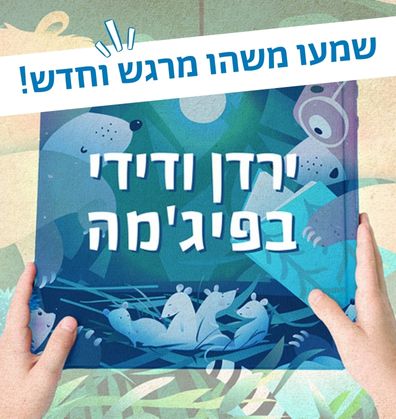אֲנִי וְעַצְמִי
אמת ושקר
הגבול העדין שבין אמירת האמת להסתרתה ובין המצאה למציאות, הוא גבול שמעסיק ילדים וילדות בגיל הרך, ונוגע בהתמודדויות חברתיות ורגשיות, ובתהליך התבגרות טבעי. את ההתמודדויות האלו יכולים ללוות ספרים שעוסקים בנושא, בעדינות וברגישות וגם בשעשוע ובהומור.
סְּפָרִים
Book-Related Family Activities

Fighting and Reconciling
Talk with your children and ask: How do you feel when you fight with a friend or family member? How do you both behave during a quarrel? Can anything help you reconcile? How can we help friends who are fighting reconcile?
QR code
Scan the code to listen to a special episode on quarreling from the podcast Yarden and Didi in Pajamas.

Making Peace
This book can inspire you to take two puppets, toy cars, or any pair of items; you can even put a pair of socks on your hands. Invite your children to imagine and make up a “real fight” – what are they fighting about? How do they reconcile? Do they reconcile on their own or do they need help doing so? Now you are ready to put on a show.

Exploring and Discovering
Hyraxes and ibexes are desert animals that live in Israel. This book provides a wonderful opportunity to explore and discover! What do they look like in real life? What characterizes them? What do they enjoy eating? What other interesting facts would you like to know about them?

Arts & crafts, songs, and other activities can be found on the Sifriyat Pijama Pinterest page.
Family reading advice
While you read, you can use different voices and invite the children to do the same: What does a person sound like when s/he bursts out crying? What does a hole being drilled into the wall sound like? Even if you’re not professional actors or actresses, your active participation in the story will enhance your shared experience and delight.

Children’s wisdom
The judge learns from the girl how to resolve the case brought before him. Following this book, you can discuss your children’s knowledge and strengths with them: It can be a hobby, insight or shared memory from an incident in which they contributed their experience and wisdom. You, parents, should also share: What have you learned from your child?

What floats in water?
Do oil droplets indeed float in water? You can see for yourselves by adding a few drops of oil into a bowl filled with water. You can later check what else floats: What happens to a piece of paper in water? Or a paper boat? A fork? Or a leaf? And how about a small plastic toy?

Resolving disputes
Just as they do in this book, you too can try to resolve a disagreement on some issue: Each party presents their case, everyone listens, and suggests how to resolve the dispute.
You can also swap roles and explore together – is only one of you right? Or can you, perhaps, reach some other kind of understanding?

More arts & crafts and activities can be found on the Sifriyat Pijama Pinterest page
Real or imaginary?
Telling and listening to stories is great fun. The shared experience makes everyone feel good. Discuss and think together – when is the right time for story-telling and letting your imagination run wild. When is it best to tell the story like it is — without adding or leaving out any details? Who would you feel comfortable confiding in when you face dilemmas?
What happened to me yesterday
Who can remember what happened yesterday? Can you tell it like a story? You can use this opportunity to share experiences. You can also play: One of the participants will tell a story, while the others try to figure out what is true and which parts are made up.

Here is where we listen
Whenever Shahar wants to share or consult, she sits on the bench with Herzl, the security guard, and he always listens. Choose a spot at home where you can always speak and be heard. Whenever you need to share, sit there, tell your story, and seek advice.
Let me tell you a story
Do you want to listen to Shahar’s stories too? Scan the QR code and listen away.
A discussion on who is wisest
Perhaps you would enjoy discussing and sharing the following: What do you think makes a person wise? Can you think of an incident in which someone behaved wisely? Was the fox wise, or the rooster? Perhaps they bother were? Or maybe neither one was?
Five facts about Levin Kipnis
What did Levin Kipnis do when he was growing up? What did he have to do with comics? Go ahead and scan the QR code, and watch the video to find out.
A game of “What actually happened?”
Having read this book together, you, parents, may want to tell a story, and ask the others to decide whether the story you’ve told actually happened or was a work of fiction. Next, ask your children to share their own stories. This may be a good opportunity to share unusual incidents with one another, and laugh together.
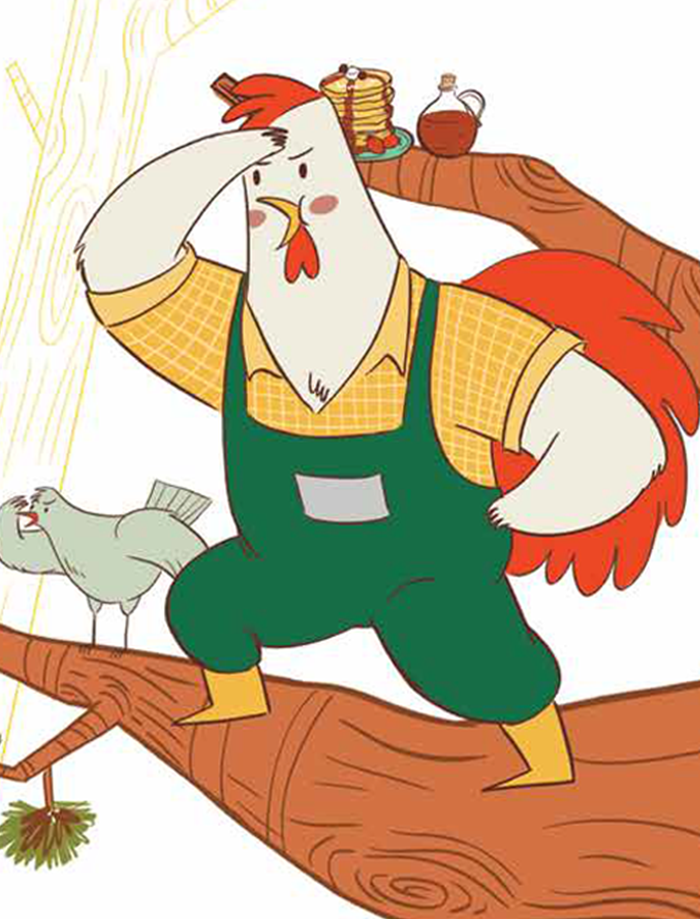
Ram-Kol and other names
What does the name Ram-Kol (Loud-Speaker) tell us about the rooster? Can you come up with names for yourselves that reflect a special, good quality that characterizes you? Perhaps the rest of your family can help!
Activities
- In the story, Nivi’s emotions are depicted as bumper cars in an amusement park. On a repeated reading of the book try to follow with your child when the bumper cars crash into each other. When do the bumper cars stop bothering her? Why?
- A chain of bad deeds versus a chain of good deeds. Talk to your child: What is Nivi’s first mistake? What are the consequences? In what way does one bad deed lead to another? What is the first step she takes to correcting her mistake? What does that lead to? In what way does one good deed lead to another?
Tikun, Tshuva ve Slicha (Rectification, Repentance, Forgiveness)
The turning point in the story is when Nivi acknowledges her mistakes. The process she undergoes is one of correction, repentance and forgiveness. The notion of Tikkun (rectification or correction) is a basic concept in Judaism. Judaism assumes that every one of us sometimes makes mistaken choices but that we all have the power to rectify ourselves, and change course for the better. There are many Jewish sources that guide a person and his surroundings on how to rectify wrongdoing. The great 12th century Jewish sage, Maimonides, guides a person to first acknowledge a wrongdoing, to repent genuinely, and to resolve not to repeat the action. He also teaches that the person who was wronged must forgive the wrongdoer who asks for forgiveness.
Activities
- Look together at the pictures in the book and suggest that your child tell the story in his/her own words. Look for the pictures depicting the moments of asking for forgiveness and giving forgiveness in the encounters among the characters (Nivi, Mother and the teacher). (You may well discover new ways to understand the story through what your child tells you. Pay attention to what details your child considers important and which ones he/she does not think are important).
- Tell your children if you sometimes did things that were not allowed when you were a child. Did you correct the wrongdoing? How? Try to create a story dealing with asking and receiving forgiveness. Consider drawing it and creating your own little book.
- Talk with your child about whether he/she has ever experienced a similar situation.
Who dressed up as whom?
You may want to look at the illustrations together, and look for the disguised animals mentioned in the story. Can your child recognize them all? Who, in your opinion, has the best costume? To whom would you have awarded the prize?
A stuffed animal masquerade
Make costumes and masks for your stuffed toys, set a table with fine food, and sing Purim songs together. Who will win the costume competition, and what will the jackpot be?
Competition and fair play
You may want to stop reading for a moment at the point where the animals argue, each one thinking it had the best costume, and ask your child to describe the decision-making process for which they would have opted. You could use this book as a platform for discussing achievements, competition, and the feelings associated with winning and losing.
The crafty fox
You may want to discuss the fox’s behavior with your child. Did he deserve to win the costume competition? The fox is portrayed as cunning in many stories. Do you know any other books on foxes, such as The Fox and the Grapes, The Chickens and the Fox, or Fox Fables? You could search for them and read them together.
Purim of the past
Do you remember a special childhood costume? You may enjoy sharing childhood experiences related to Purim and dressing up with your child. You could also look at family photo albums, and be reminded of parents’, siblings’, and children’s past costumes.
Oded Burla
is the author and illustrator of many children’s books, among them: A Smile on every Corner, The Melody, and Oded Burla’s Big Book. You may want to look for more of his books at the library, and enjoy them together.
Family Activities
- Jack Kent wrote and illustrated this story. If you pay attention you’ll notice that the illustrations don’t always match the text of the story. When reading the words, “There’s no such thing as a dragon”, ask your children to check to see if “There’s no such thing as a dragon” also appears in the drawings. You may want to discuss with the children: What describes the reality better – the words of the story or the pictures?
- The pictures in the story present details beyond the plot that is described in the text. It would be fun to go over the illustrations with your children and point out the dragon’s actions in each
- Billy sees something that his parents don’t see. Is it possible to see something that nobody else sees? You may want to play “What’s Hiding in the Scribble?”: Each person in turn draws an abstract picture and the next person tries to identify in it a familiar image or object, add missing details to it and color
- Take this opportunity to discuss the feelings of the various characters in the story with your children. You may consider together: Why didn’t the mother want to relate seriously to what Billy had to say? How, in your opinion, did Billy feel when his mother didn’t believe him? You can expand the discussion to include something that happened to you or your children. Did any of you ever experience an incident in which someone didn’t believe you?
- You are invited to invent your own “dragon” or scary creature. Billy’s dragon mostly likes to eat and to sleep, and he calms down whenever someone pats him. What does your creature like?
- How is it possible to cope with scary dragons? Many tales have been written about heroes who fight with dragons and overcome them. Do you know any other stories about dragons? Following the reading and activities with this story you can tell them to your
- Concerns in a person’s heart – should we ignore them, or deal with them directly? How do you tend to cope with things that concern you? Use this opportunity to share something that worried you when you were a child, and tell your children how you overcame your
Activities You Can Do at Home
- You don’t need to know how to read to figure out what’s going on in these comic strips! Your children can “read” the pictures and tell the story in their own words.
- Even young children can draw a comic strip. Ask them to choose a story they know and create a comic strip out of it.
- Mr. Fibber the Storyteller uses his imagination to invent impossible tales. Children, too, can make up wildly exaggerated and imaginative stories. Together with your children, you could work on creating your own imaginary tale. One of you could begin: “One morning, I was on my way to kindergarten when I saw (fill in the blank)…” The next person might continue the story line with: “…when suddenly, I came to…” At the end of the story, you could select one of the imaginary situations you concocted together, and make illustrations for it.
- What makes you laugh? After you read these comics—maybe close to the Purim holiday—you could host a Family Joke Night.
- Do you know other books by Leah Goldberg? You might look for her stories and poems at your school or library, so you can read and enjoy them together. We hope you enjoy reading and talking about this book!

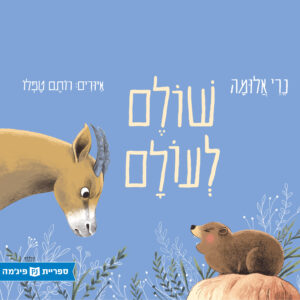 Peace to the World
Peace to the World 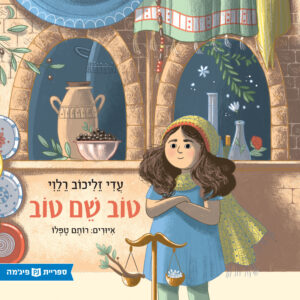 A Good Name
A Good Name 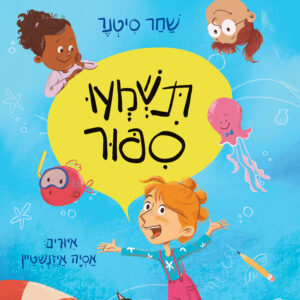 Let Me Tell You a Story
Let Me Tell You a Story 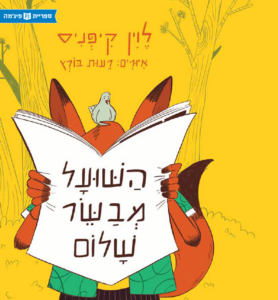 The Fox Announces Peace
The Fox Announces Peace 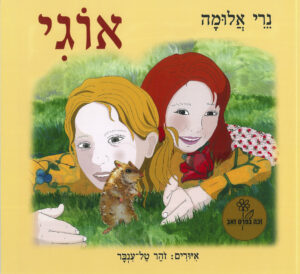 Ogi
Ogi 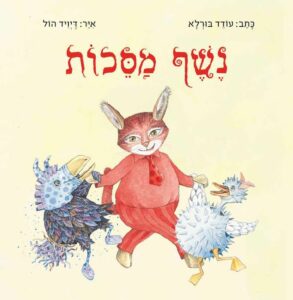 Masquerade
Masquerade 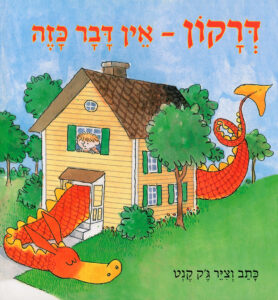 There’s No Such Thing as a Dragon
There’s No Such Thing as a Dragon 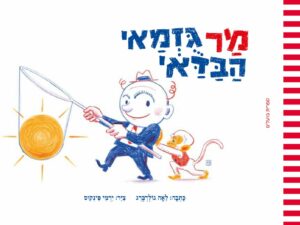 Mr. Fibber the Storyteller
Mr. Fibber the Storyteller 






